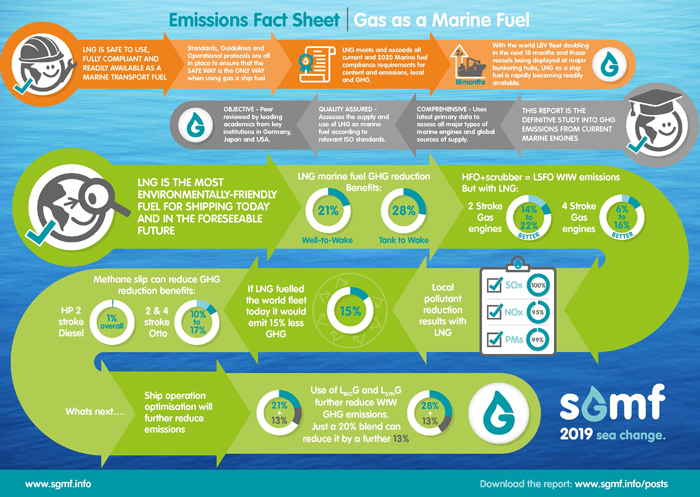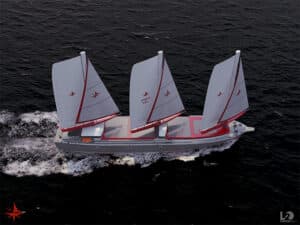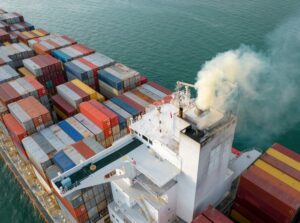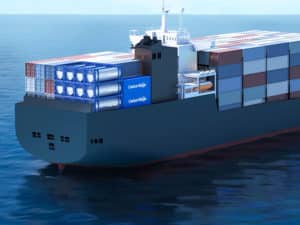
Study confirms that LNG as a marine fuel yields big GHG reductions
Written by Nick Blenkey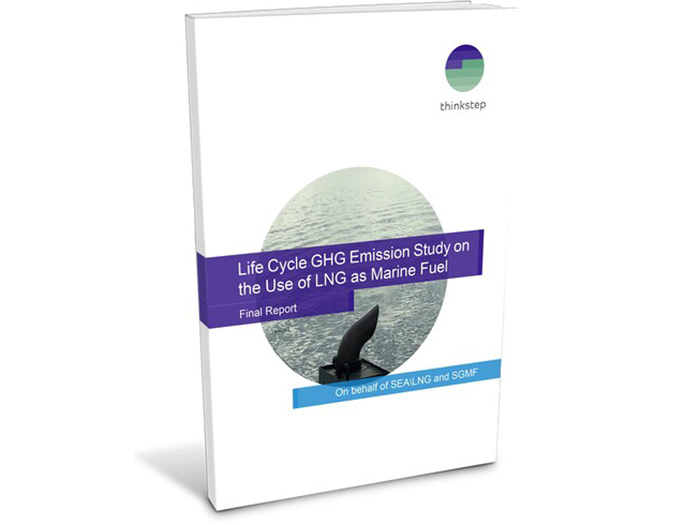
According to a just-released independent study, reductions in ship emissions of GHG of up to 21% can be achieved using LNG as a marine fuel, compared with conventional oil-based fuels over the entire life-cycle from Well-to-Wake (WtW). The study also shows that emissions of other local pollutants, such as sulfur oxides (SOx), nitrogen oxides (NOx) and particulate matter (PM), are close to zero when using LNG.
The study was commissioned by the SEA\LNG coalition and SGMF (Society for Gas as a Marine Fuel and was conducted by data and consultancy provider thinkstep AG according to ISO standards.
“The Life Cycle GHG Emission Study is a long-awaited piece of the ‘LNG as a marine fuel’ puzzle,” said SEA\LNG Chairman Peter Keller. “It not only confirms what we already knew in terms of LNG’s immediate impact on air quality, human health and its cleanliness, but clearly highlights the genuine, substantiated GHG benefits of using today’s marine engines capable of burning natural gas. Moving from current Heavy Fuel Oil (HFO) to LNG does reduce GHG emissions. LNG does contribute to the International Maritime Organization (IMO) GHG reduction targets. And it is clear that LNG is the most environmentally-friendly marine fuel that is readily available and safe, both today and in the foreseeable future.”
On an engine technology basis, the study indicates that absolute WtW emissions reduction benefits for LNG-fueled engines compared with HFO fueled ships today are between 14% to 21% for two-stroke slow speed engines and between 7% to 15% for four-stroke medium speed engines. 72% of the marine fuel consumed today is by two-stroke engines with a further 18% used by four-stroke medium speed engines.
Study partner Chad Verret, Society for Gas as a Marine Fuel (SGMF) Board Chairman, added: “LNG is safe to use, fully compliant and readily available as a marine transport fuel. Standards, guidelines and operational protocols are all in place to ensure that the safe way is the only way when using gas as a marine fuel. LNG meets and exceeds all current and 2020 marine fuel compliance requirements for content and emissions, local and GHG. With the world LNG bunker vessel fleet doubling in the next 18 months and those vessels being deployed at major bunkering hubs, LNG as a ship fuel is rapidly becoming readily available.”
Ongoing optimization in supply chain and engine technology developments will further enhance the benefits of LNG as a marine fuel. Additionally, bioLNG and synthetic LNG – both fully interchangeable with LNG derived from fossil feedstock – offer the potential for significant additional GHG emissions reductions. For example, a blend of 20% bioLNG as a drop-in fuel can reduce GHG emissions by a further 13% when compared to 100% fossil fuel LNG.
The full Well-to-Wake GHG Emissions Lifecycle Study can be accessed HERE
